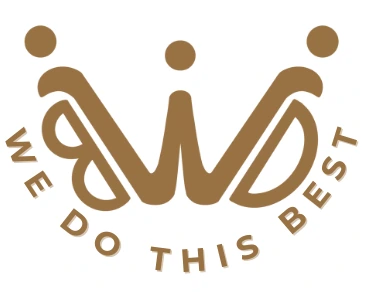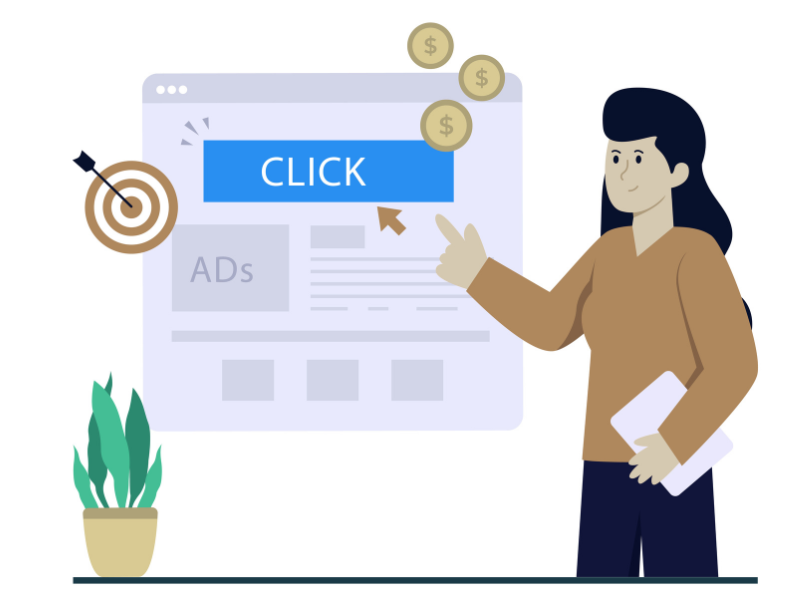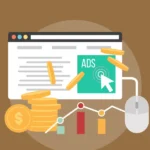Maximize Clicks: Ad Copywriting Tips for Improved CTRs
Every second, millions of ads flood screens worldwide. Only the sharpest copy captures attention. Did you know the average CTR (Click-Through Rate) for Google Ads is just 1.91%? Standing out demands more than luck; it requires strategy. This guide provides actionable ad copy tips. We will explore the proven principles and expert techniques you need. You will learn how to write ad copy that converts. You will transform your ads from invisible banners into compelling invitations that demand a click.
Understanding CTR: The Foundation of Successful Ad Copy
Click-through rate measures the percentage of people who click your ad after seeing it. The formula is simple: CTR = (Clicks ÷ Impressions) × 100. Yet this metric carries enormous weight in determining campaign success, influencing everything from ad costs to audience engagement.
Industry CTR Benchmarks for 2024
Table
| Platform/Type | Average CTR | Performance Notes |
| Google Ads (Search) | 4.99% | High-intent search queries |
| Google Ads (Display) | 0.35% | Banner ads across websites |
| Facebook Ads | 1.77% | Social media advertising |
| LinkedIn Ads | 0.49% | Professional audience targeting |
| Email Marketing | 2-5% | Campaign benchmarks |
| B2B SaaS | 2.1% | Software industry standard |
| eCommerce | 1.7% | Online retail benchmark |
Research shows that 98% of copywriting tests have a measurable impact on conversions. This data proves that strategic copy changes directly influence user behavior and campaign performance. Higher CTRs improve Quality Score, which lowers CPC.
The Psychology Behind High-Converting Ad Copy
Effective copywriting taps into fundamental human psychology. Power words trigger emotional responses that bypass logical reasoning and compel action. The most successful ads combine curiosity with emotion, creating irresistible content that demands attention.
Core Psychological Triggers
- Headlines with Numbers: Receive 36% higher click-through rates. Specificity captures attention more effectively than vague promises.
- Positive Sentiment: Titles with positive sentiment achieve 4.1% higher CTR than neutral alternatives, demonstrating emotion’s role in driving engagement.
- Addressing Fears: Addressing customer fears and reservations increases landing page conversions by 80%. This powerful technique builds trust while removing barriers to action.
- Personalized CTAs: Convert 202% better than generic alternatives, proving that targeted messaging dramatically outperforms one-size-fits-all approaches.
Essential Elements of High-CTR Ad Copy
Compelling Headlines
Your headline determines whether 80% of readers continue past the first line. Michael Masterson’s “Four U’s” formula provides a proven framework: headlines must be Urgent, Useful, Unique, and Ultra-specific.
Power Words That Drive Action
Strategic power word placement significantly impacts performance. Words like “proven,” “guaranteed,” and “exclusive” build authority and trust. Action words such as “transform,” “unlock,” and “accelerate” create momentum toward conversion.
Clear Value Propositions
Focus on benefits rather than features. Instead of “101-inch diagonal TV,” write “Throw Super Bowl parties that make friends jealous for years.” This approach connects products to emotional outcomes that resonate with audiences.
Research-Backed Copywriting Techniques
- The AIDA Framework: Attention, Interest, Desire, Action remains the foundation of persuasive copy. Start with attention-grabbing headlines, build interest through relevant benefits, create desire with emotional appeals, and close with clear action steps.
- Social Proof Integration: Include testimonials, case studies, and user statistics. Social proof leverages our tendency to follow others’ behavior, especially when facing uncertainty about decisions.
- Storytelling for Engagement: Stories create emotional connections that facts alone cannot achieve. Use brief anecdotes that position your product as the solution to relatable problems.
A/B Testing Your Copy for Maximum Impact
Successful copywriters conduct continuous testing to optimize performance. Research involving 250+ A/B tests revealed that strategic copy changes can improve conversion rates by 127%.
Testing Priority Elements
- Headlines and Subject Lines
- Call-to-Action Buttons
- Value Propositions
- Social Proof Placement
- Urgency Language
Case Study: AdWords Copy Optimization
One agency rewrote client ad copy without changing keywords or campaign settings. Results showed a 97.3% cost-per-conversion drop (from $2,000+ to under $60) and conversion rates nearly 5x higher (10.17% vs 2.25%). This dramatic improvement came purely from copy optimization.
Platform-Specific Copywriting Strategies
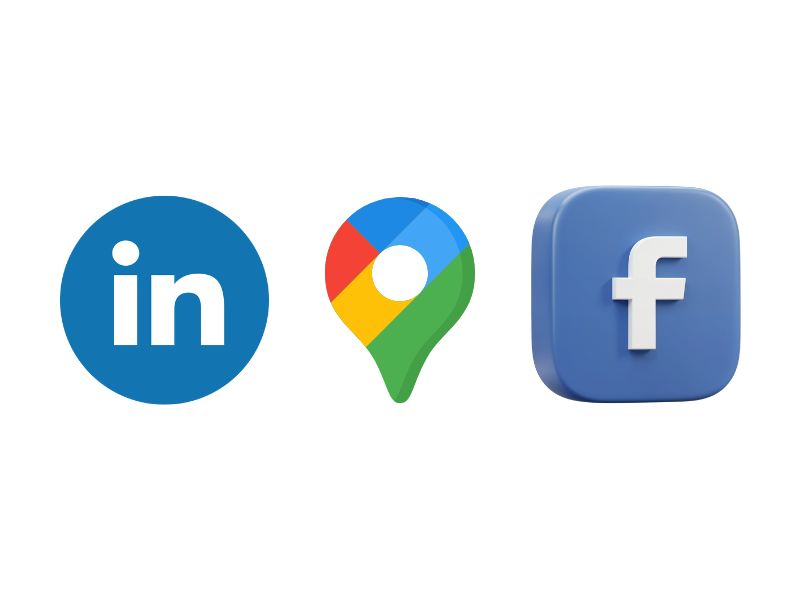
Google Ads Copy
Focus on keyword relevance and clear value propositions. Include targeted keywords naturally while emphasizing user benefits. Use ad extensions to provide additional information and improve visibility.
Facebook Ads Copy
Keep messaging concise and visually appealing. Target specific audience segments with tailored pain points and interests. Include clear calls-to-action that prompt immediate response.Look for trends in in instagram and facebook to add right copy.
LinkedIn Ads Copy
Maintain a professional tone while showcasing thought leadership. Target specific industries, job titles, and company sizes for maximum relevance. Use personalized messaging to drive engagement.
Advanced Copywriting Tactics
Emotional Triggers
Use words that evoke specific emotions relevant to your audience. Fear, excitement, curiosity, and urgency all drive different behaviors. Match emotional triggers to campaign objectives for optimal results.
Scarcity and Urgency
Limited-time offers and exclusive access create fear of missing out. Use phrases like “limited availability” and “expires soon” to encourage immediate action.
Authority Building
Include credentials, certifications, and industry recognition. Authority signals build trust and credibility, especially important for high-consideration purchases.
Common Copywriting Mistakes to Avoid
Keyword Stuffing
Overusing keywords creates awkward, unnatural copy that repels readers. Focus on natural language that incorporates keywords organically.
Feature Focus Over Benefits
Listing product specifications without explaining their value fails to connect with audiences. Always translate features into meaningful benefits.
Weak Calls-to-Action
Vague instructions like “learn more” underperform specific actions like “download your free guide.” Be explicit about desired next steps.
Measuring and Optimizing Performance
Key Metrics to Track
- Click-through Rates by Platform
- Conversion Rates from Clicks
- Cost per Acquisition
- Return on Ad Spend
- Engagement Rates
Optimization Strategies
- Test One Element at a Time: For clear results, focus on one variable per test.
- Use Statistical Significance: Ensure your sample size is large enough to validate changes.
- Document Winning Variations: Keep a record of successful copy for future campaigns.
- Scale Successful Copy: Apply winning variations to similar audiences for broader impact.
Industry-Specific Applications
B2B Copywriting
Professional audiences respond to authority, expertise, and clear ROI demonstrations. Use case studies, industry statistics, and peer testimonials to build credibility.
eCommerce Copy
Focus on product benefits, social proof, and urgency. Include customer reviews, limited-time offers, and clear value propositions.
Healthcare Marketing
Emphasize trust, safety, and expert endorsements. Comply with industry regulations while building emotional connections through patient success stories.
Future Trends in Ad Copywriting
AI-Assisted Copywriting
Artificial intelligence tools help with research, optimization, and initial drafts. However, human creativity and strategic thinking remain irreplaceable for emotional connection and brand voice.
Personalization at Scale
Dynamic content that adapts to individual user behavior and preferences will become standard. Use data insights to create more relevant, targeted messaging.See more on personalization at scale article.
Voice Search Optimization
Conversational copy that mirrors natural speech patterns will gain importance as voice search grows. Write for how people speak, not just how they type.
AI-Powered PPC Campaigns
AI-powered PPC campaigns are revolutionizing the way businesses approach digital advertising. By leveraging machine learning algorithms and data analytics, AI introduces a level of sophistication that surpasses traditional manual methods.
Actionable Implementation Steps
Audit Current Copy Performance
Analyze existing CTR data across all platforms and identify underperforming elements.
Implement Power Words
Integrate emotion-triggering words naturally into headlines, descriptions, and calls-to-action.
Test Headlines First
Start A/B testing with headline variations, as they have the highest impact on performance.
Add Social Proof
Include customer testimonials, user counts, and industry recognition in ad copy.
Optimize for Mobile
Ensure copy reads well on mobile devices where most users consume content.
Create Urgency
Add time-sensitive language and limited availability offers where appropriate.
Track and Iterate
Monitor performance metrics consistently and make data-driven improvements.
The Description Must Build a Bridge to the Click
If the headline hooks the user, the description pulls them in. It is your chance to expand on the promise you made. It must connect the user’s problem to your solution with absolute clarity. A confusing or generic description will break the user’s trust. You must use this space to build momentum toward the click.
The P-B-C Formula for Effective Ad Descriptions
- Problem: Briefly acknowledge the user’s pain point. This shows empathy.
- Example: “Struggling with complex project management tools?”
- Benefit: Present your Unique Selling Proposition (USP) as the clear solution. What makes you different and better?
- Example: “Our simple platform helps you organize tasks in minutes.”
- Call to Action (CTA): Tell the user exactly what to do next. Be direct and clear.
- Example: “Get Started Free Today.” or “Request Your Free Quote.”
Case Study: The Rise of Slack
Slack’s early ad campaigns were a masterclass in this formula. Their target audience struggled with messy email chains and disorganized communication.
- Problem: “Tired of endless email threads?”
- Benefit: “Slack brings all your team communication into one place.”
- CTA: “Try Slack for Free.”
This simple, three-part structure addressed the pain, presented a clear solution, and provided a no-risk next step. This clarity was instrumental in their explosive growth. Their ad copy focused entirely on the user’s outcome, not on software features.
Do Not Forget to Use Ad Extensions
Sitelinks, callouts, and structured snippets provide more space to add benefits, showcase features, and build credibility. Our analysis shows that ads utilizing at least three types of ad extensions can see up to a 15% increase in CTR.
People Make Decisions Based on Emotion
You must appeal to logic, but you win the click with emotion. Psychological triggers in ad copywriting are powerful tools to prompt action. They tap into fundamental human motivators. Using them correctly can dramatically improve your click-through rate with ad copy.
1. The Urgency Trigger: The Fear of Missing Out (FOMO)
Urgency forces a decision. It prevents the user from saying, “I’ll think about it later.” A limited-time offer creates a powerful incentive to act now.
- Example: “Sale Ends Today. Shop Now.”
- Example: “Only 3 Spots Left for Our Webinar.”
- Example: “Last Chance for 50% Off.”
Data Point: A study by Behavioural Marketing Database Coglode found that adding a sense of urgency can increase conversion rates by over 10%.
2. The Social Proof Trigger: The Power of the Crowd
People trust other people. Social proof leverages this tendency. It shows that others have already chosen and trusted your brand. This reduces perceived risk for a new customer.
- Example: “Loved by 20,000+ Marketers.”
- Example: “Rated 4.9 Stars on Trustpilot.”
- Example: “As Featured in Forbes Magazine.”
3. The Curiosity Trigger: The Need to Know More
Humans are curious creatures. You can leverage this by creating a knowledge gap. Tease information in your ad copy that can only be satisfied by clicking.
- Example: “The One Mistake Most Homebuyers Make.”
- Example: “Discover the Secret to Perfect SEO.”
- Example: “This Simple Trick Will Lower Your Bills.”
These triggers are not about manipulation. They are about framing your offer in a way that aligns with human psychology. They make your ad more compelling and your Call to Action more powerful.
You Must Let Data Be Your Guide
Expert opinions and best practices are excellent starting points. But every audience is unique. The only way to know for sure what works is to test. A/B testing, also known as split testing, is the process of running two or more variations of an ad to see which one performs better. Data always beats guesswork.
Element to Test
TableCopy
| Element to Test | Variation A (Control) | Variation B (Test) |
| Headline | “Powerful Accounting Software” | “Tired of Messy Spreadsheets?” |
| Description | “Features include invoicing, reports…” | “Save 10 hours a week on accounting.” |
| Call to Action | “Learn More” | “Start Your Free Trial” |
| Display URL | yourwebsite.com/software | yourwebsite.com/Free-Trial |
Compelling Ad Copywriting Tips for Higher CTRs
1. Understand Your Audience
Before you start writing ad copy, it’s crucial to understand your target audience. Who are they? What are their pain points, desires, and motivations? Conduct thorough market research and create detailed buyer personas to guide your messaging. According to a study by HubSpot, personalized ads can generate up to 50% higher click-through rates than generic ones.
2. Craft a Strong Headline
Your headline is the first thing users see, and it must grab their attention instantly. Use power words like “free,” “new,” “limited-time,” or “exclusive” to create urgency and appeal. Keep it concise and focused on the primary benefit. For example, instead of “Buy our product,” try “Exclusive Deal: Get 50% Off Your First Purchase Today!” Check out our blog on responsive search ads to know more.
3. Highlight Unique Value Propositions
Clearly communicate what makes your product or service unique. What problem does it solve? Why should users choose you over competitors? Emphasize these unique selling points in your ad copy. Research from Unbounce shows that ads with strong value propositions see a 30% higher conversion rate.
4. Use Clear and Compelling CTAs
A clear call to action (CTA) tells users exactly what to do next. Use action-oriented verbs like “shop now,” “sign up today,” or “download free guide.” Avoid vague CTAs like “click here.” According to Google, well-crafted CTAs can increase click-through rates by up to 26%.
5. Leverage Social Proof
Including social proof, such as customer testimonials, reviews, or trust badges, can significantly boost credibility and CTRs. For instance, adding a trust badge like “Trusted by 10,000+ Customers” can increase conversions by up to 38% (Source: Conversion Rate Experts).
6. Optimize for Mobile Users
With over 50% of internet traffic coming from mobile devices, ensure your ad copy is mobile-friendly. Keep headlines short, use simple language, and avoid overly complex sentences. Google’s Mobile-First Indexing means mobile-optimized ads perform better in search results.
7. Test and Refine
Continuously test different ad variations to see what resonates best with your audience. A/B testing can reveal which headlines, CTAs, and value propositions drive the most clicks. According to WordStream, businesses that regularly test their ads see a 20-30% improvement in CTRs over time.
8. Align with Search Intent
Ensure your ad copy matches the intent behind users’ search queries. If someone searches for “best running shoes,” your ad should directly address that intent with relevant messaging. Research from BrightEdge shows that ads aligned with search intent see a 40% higher CTR.
9. Use Dynamic Keyword Insertion
Dynamic Keyword Insertion (DKI) automatically inserts the user’s search term into your ad, making it more relevant. For example, if someone searches for “affordable laptop,” your ad could display “Find Affordable Laptops at Great Prices.”
- Keep It Concise and Scannable
Online users have short attention spans. Keep your ad copy concise, using bullet points or short paragraphs to highlight key benefits. According to the Nielsen Norman Group, users spend only 15 seconds scanning an ad before deciding whether to engage.
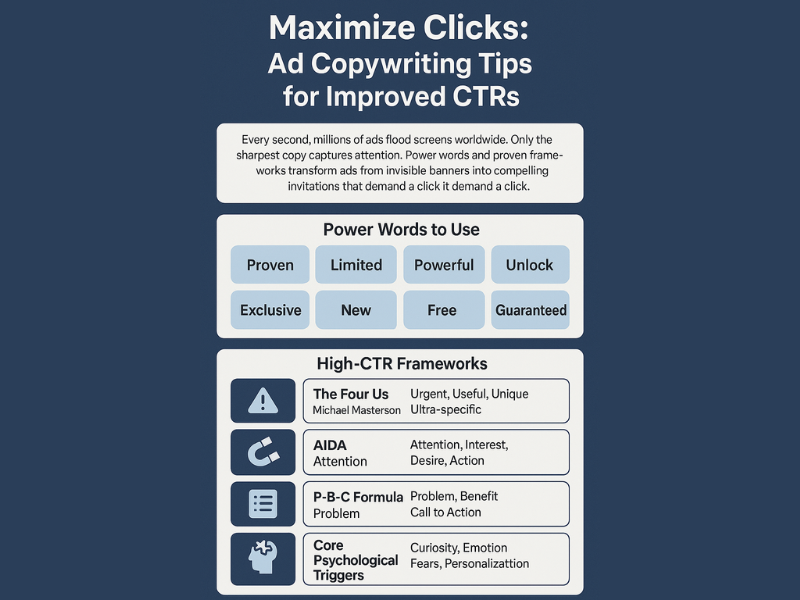
Conclusion
Higher click-through rates result from understanding your audience psychology, crafting compelling messages, and continuously testing improvements. The combination of proven copywriting principles with platform-specific strategies creates advertising copy that not only captures attention but drives meaningful business results.
By implementing these research-backed techniques and avoiding common pitfalls, your ad copy will consistently outperform industry benchmarks while building stronger connections with target audiences. Want to improve your ad campaigns? Learn more in our guide or book a strategy session to start driving measurable results today.
FAQ
How do you optimize ad copy for higher click rates?
To optimize ad copy for higher click rates, focus on understanding your audience, crafting compelling headlines, highlighting unique value propositions, using clear CTAs, leveraging social proof, and continuously testing and refining your ads.
How to write Google Ads ad copy for better CTR?
Write Google Ads ad copy for better CTR by using strong, action-oriented language, highlighting key benefits, aligning with search intent, and including dynamic keyword insertion to make ads more relevant.
How to improve ad click-through rate (CTR)?
Improve ad click-through rate (CTR) by conducting thorough audience research, crafting attention-grabbing headlines, emphasizing unique selling points, using persuasive CTAs, and regularly testing different ad variations.
How to get 10% CTR?
Achieve a 10% CTR by optimizing ad copy with compelling headlines, clear value propositions, strong CTAs, and relevant keywords, while continuously testing and refining your ads based on performance data.
